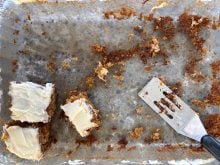There is nothing more delectable than fresh fruit. Unfortunately, fresh fruit is seasonal. Certo suggests that we stop drooling. The warm days of summer and autumn are not the only times to enjoy your favorites. Frozen fruits are available year round and are perfect for making jams and jellies.
In the past, jams and jellies were used as methods of storing fruits through the winter when food wasn’t always available. Today, preparing jam is an easy way to capture summer memories or bring a tasty treat to your table at any time of the year.
Read Also

Potato farm requires year-round management
The most recent Open Farm Day in Alberta showcased agricultural producers across the province educating the general public about the process that is required is to get food to their table.
You may be thinking, isn’t preserving jams and jellies old-fashioned, when they are so accessible in the grocery stores?
Think again. A renewed passion for home-style, simple foods is sweeping North America. An annual food trends survey reported that 40 percent of American restaurants served more “comfort food” in 1996 than in the previous year. Consumers surveyed said they wanted tasty, low-cost meals that reminded them of simpler times.
Here are some easy recipes.
Strawberry-rhubarb light jam
Prep time: 15 minutes
Cooking time: 20 minutes
4 1Ú2 cups prepared 1.1 L
fruit (about 11Ú4
quart/1 L fully ripe strawberries and 1 pound/500 g fully ripe rhubarb
2 3Ú4 cups 625 mL
granulated sugar
1 box Certo light 1
fruit pectin crystals
Stem and thoroughly crush strawberries, one layer at a time. Measure two cups (500 mL) into a large saucepan. Finely chop rhubarb by hand or in a food processor. Measure 21Ú2 cups (650 mL) into a saucepan with strawberries.
Measure sugar and set aside.
Combine fruit pectin crystals with 1Ú4 cup (50 mL) of measured sugar. Stir pectin mixture into fruit.
Place saucepan over high heat and stir until mixture comes to a full boil.
Stir in remaining sugar. Continue to stir and cook over high heat until mixture comes to a full rolling boil. Boil hard one minute, stirring constantly. Remove from heat.
Stir and skim foam for five minutes to prevent floating fruit. Pour quickly into warm, sterilized jars filling up to 1Ú4 inch (0.5 cm) from rim.
Seal while hot with sterilized two-piece lids with new centres. If desired, jars may be processed according to lid manufacturer’s directions. Makes 41Ú2 cups (1.1 L).
Pineapple chutney
Prep time: 25 minutes
Cooking time: 20 minutes
4 cups canned 1 L
crushed pineapple, drained
1 cup raisins 250 mL
1Ú2 cup vinegar 125 mL
1Ú3 cup chopped 75 mL
onion
1Ú4 cup lemon juice 50 mL
(about two lemons)
2 tablespoons 30 mL
chopped crystallized
ginger
1 tablespoon salt 15 mL
1 teaspoon ground 5 mL
allspice
1Ú2 teaspoon ground 2 mL
cinnamon
1Ú2 teaspoon ground 2 mL
cloves
1Ú2 teaspoon ground 2 mL
ginger
51Ú2 cups 1.37 L
granulated sugar
3Ú4 cup firmly 175 mL
packed brown sugar
2 pouches Certo 2
liquid fruit pectin
Combine crushed pineapple, raisins, vinegar, onion, lemon juice, ginger, salt and spices in large saucepan.
Add sugars to fruit and mix well.
Place saucepan over high heat. Bring to a full rolling boil and boil hard five minutes, stirring constantly. Remove from heat.
Immediately stir in liquid fruit pectin.
Stir and skim for 10 minutes to prevent floating fruit.
Pour quickly into warm, sterilized jars filling up to 1Ú4 inch (0.5 cm) from rim.
Seal while hot with sterilized two-piece lids with centres. (If desired, jars may be processed according to lid manufacturer’s directions.) Make seven cups (1.75 L).
Rhubarb Grand Marnier jelly
Prep time: 15 minutes
Cooking time: 20 minutes
3 cups rhubarb 750 mL
juice (about three pounds/1.5 kg of rhubarb)
41Ú2 cups 1.125 L
granulated sugar
1 box Certo fruit 1
pectin crystals
1Ú4 cup Grand 50 mL
Marnier liqueur
Chop finely or grind about three pounds (1.5 kg) red-stalked rhubarb. Place in jelly cloth or bag and squeeze out juice. Measure three cups (750 mL) into a large saucepan.
Stir fruit pectin crystals into juice.
Place saucepan over high heat and stir until mixture comes to a hard boil. Immediately stir in sugar. Bring to a full rolling boil and boil hard one minute, stirring constantly. Remove from heat. Stir in liqueur.
Skim off foam with metal spoon and pour quickly into warm sterilized jars filling up to 1Ú4 inch (0.5 cm) from rim.
Seal while hot with sterilized two-piece lids with new centres. Makes about five cups (1.25 L).
Tips: For a clear jelly, use more rhubarb and do not squeeze bag.
If you want more recipes or are looking for some innovative jam making ideas, or have questions on proper storage or freezing of fruit, call the toll-free Certo hotline at 1-800-268-6038 between 9 a.m. and 4 p.m. Monday to Friday.
Send for recipes
To receive Certo’s book of 26 specially developed, no-fail recipes, as well as an extensive introduction outlining success tips, send your name, address and a $2 cheque or money order (for postage and handling) to: Certo Pick of the Season Recipe Book Offer, Box 5161, Paris, Ont., N3L 3W5.
For more information, contact Deborah Adams or Aline Barbakjiam at Harbinger Communications Inc., 416-960-5100.
Estrogen content in food
Dear TEAM: I am looking for some information on the estrogen content of vegetables and meat. – M.S., Rocky Mountain House, Alta.
Dear M.S.: I contacted David Suzuki’s office as I had read an article that he had done on estrogen. Unfortunately, the article did not deal with estrogen content in food.
I contacted the University of Saskatchewan, and was steered to the department of nutrition and dietetics, and spoke to Susan Whiting about your request. She supplied an article from Tufts University’s Diet and Nutrition Letter, February 1995.
The article outlines studies that have been done on phytoestrogens, plant hormones, which are weaker versions of human estrogen. The plant hormones seem to be having profound effects on health problems. Here is an excerpt from the article:
“So far, some 300 plants with estrogen-like activity have been identified, including common foods such as carrots, corn, apples, barley and oats. Yet products made from soybeans, tofu for instance, have received the lion’s share of attention because of its estrogenic punch. Researchers have observed that in countries where people eat diets high in soy foods, that there are lower incidents of breast cancer, prostate cancer and the effects of menopause.”
For more information, contact Whiting at 306-966-5837.
















